Prepper side hustles provide an excellent opportunity not just to thicken your wallet but also a chance to increase your self-reliance skills. Blacksmithing was a vital pioneer skill that is still essential in our modern world.
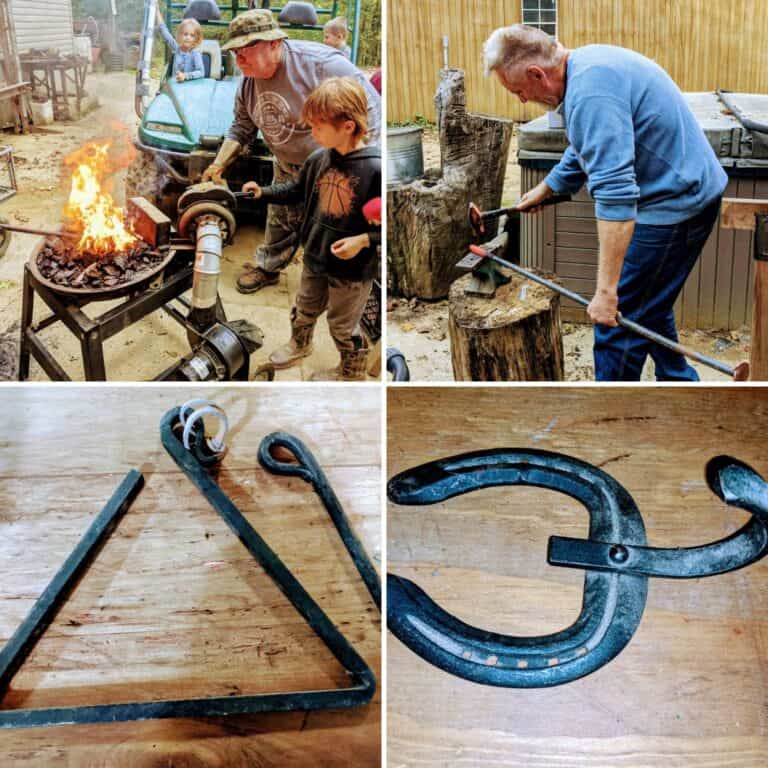
A blacksmith prepper side hustle could quite easily be turned into a full-time work from home career – which is always the best option for a prepping family.
Blacksmiths not only still exist in the 21st Century world, but the highly skilled men and women working in the industry are also thriving.
Not only are blacksmithing skills still used by farriers in rural areas and knife makers (aka bladesmiths) they are also used to create both interior and exterior decor items for homes and businesses – as well as cookware.
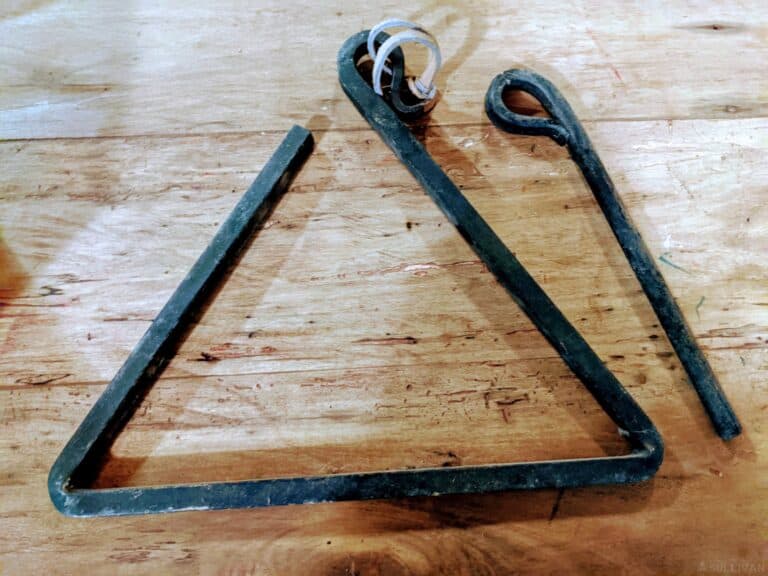
Although there are not as many blacksmiths engaging in this traditional form of metalworking in 2020 as there were in 1820, men and women with this particular skill set are eagerly courted by a myriad of different modern-day industries.
For example, blacksmiths routinely create the hinges and other hardware necessary for cabinet and furniture making.
The tools of the trade used by modern blacksmiths are identical or nearly so to the ones used by our ancestors.
Whether you are considering the launching of a blacksmith prepper side hustle to make unique home decor and outside decor or you want to focus upon more traditional projects like the making of horseshoes, tools, cookware, and hardware there is a market for your products and services.
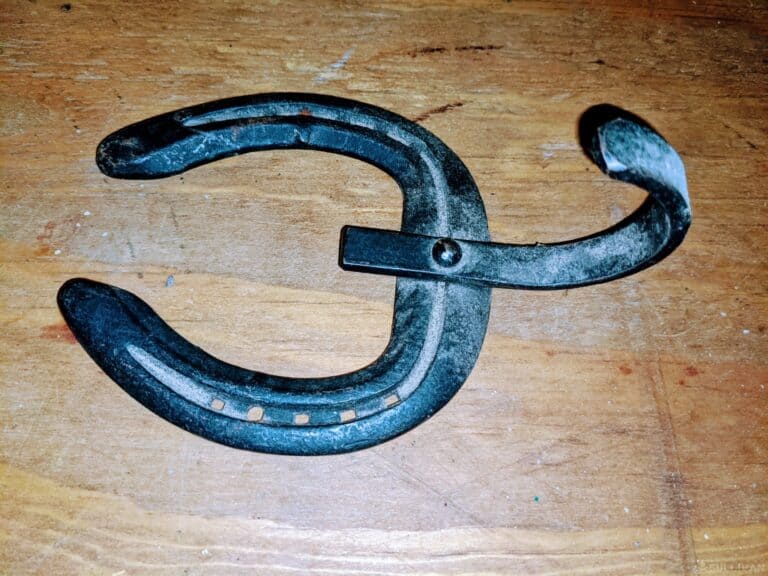
Table of Contents
What Does A Blacksmith Do?
Blacksmiths shape metal to create a product for a specific use. He or she joins pieces of metal together to make larger items, forging purchased metal rods or scrap metal into a weapon, tool, decorative item, architectural piece or hardware.
The type of activities you do as a blacksmith can vary depending upon the type of objects you decided to focus your skills upon. But, all blacksmiths will regularly be engaging in the skills and tactics below.
- Choosing the right type of metals and the proper techniques for working with those metals for each and every project.
- Sketch designs for projects by hand or using a computer – or tracing designs.
- Use a forge powered by their chosen means and maintain it safely.
- Forge and heat metals during the shaping process.
All blacksmiths become well acquainted with a vast array of tools and equipment over time.
The staples of a blacksmith’s tool include an anvil, a forge, and long-handled tongs, snips, chisels, and hammers.
Blacksmiths who employ modern equipment in their business also tend to use hydraulic presses, welders, and circular saws, as well.
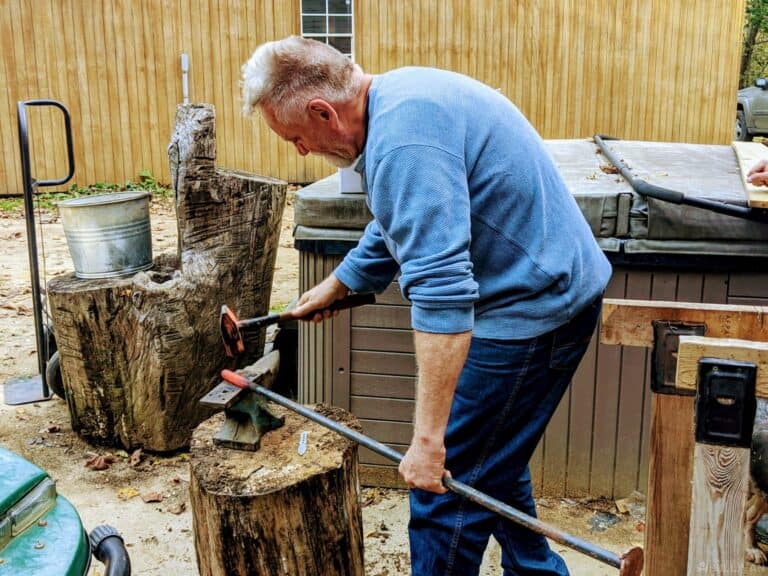
Skilled tradesmen and women who use only traditional muscle-powered tools often use their traditional manner of blacksmithing as part of their branding and marketing plan.
A blacksmith may focus their attention on purely ornamental or functional items – or dip their tongs into both kinds of projects.
Architectural pieces that are also often sold or directly commissioned include grates and benches.
The making of architectural or furniture projects by a blacksmith most often combines both forge skills and artistry.
A blacksmith with a penchant for both form and design are typically the most versatile when it comes to the making of functional, artistic decor, or architectural designs.
Thinking outside of the proverbial box can help a blacksmith obtain a greater degree of success when it comes to designing projects that are as visually appealing as they are functional.
A blacksmith who is physically strong, has good hand-eye coordination, and possesses a significant degree of cognitive skills.
Both the shaping and the finishing of hot metal will require a strong level of each of those three attributes.
Some folks might be surprised to realize just how much math is involved with blacksmithing. The precise measuring, angling, and cutting of metal demands not only precision but also mathematical accuracy.
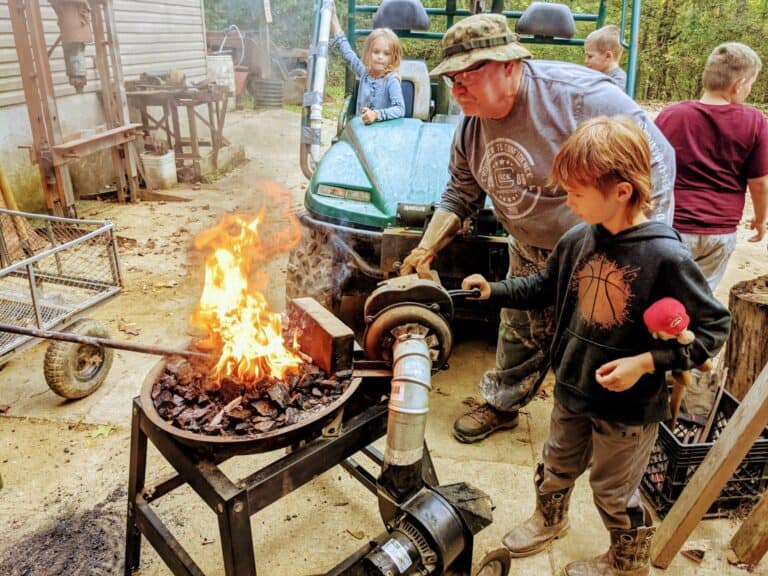
Even blacksmiths who focus on the traditional ways and focus on farrier skills and bushcrafting weapons will still likely need to use modern technology to get their prepper side hustle business going … and growing.
Creating at least a basic website and launching the business on social media platforms to advertise the blacksmiths goods and services is a must.
In our modern world, a grasp on business, marketing, and social media is necessary for self-employed blacksmiths.
A basic website, Facebook page and Instagram profile are extremely helpful in advertising your skills and showing potential clients the work you have already done.
The old-fashioned word of mouth can also help a blacksmith’s reputation soar – or sink, especially when this prepper side hustle is a cottage business in a small community.
Developing a signature style is another great way for a prepper blacksmith to distinguish and differentiate themselves from other skilled tradesmen and women in the same area.
Creating a specific line of products with a unique mark on it to immediately alert those viewing it to its maker is one simple way to project a finite persona for your brand of work.
Blacksmith History
One of the first known blacksmith examples stretches all the way back to 3000 BC. Smiths in China, Egypt, and Greenland are thought to have created the first tools made from iron.
These early blacksmiths are thought to have used fragments from meteors that fall out of the sky. This is likely how stories from ancient cultures have linked blacksmithing to supernatural beliefs and mythical elements.
It was during the Iron Age that began around 500 BC that blacksmithing as a skilled trade really took hold.
The “village smithy” became prized throughout Europe not only for the tools and hardware they made but also for their fine understanding about how steel was used to make an entire manner of goods both small and large.
When folks from Europe began their pilgrimages to America, blacksmiths and their forges came along to help create the supplies those early pioneers would need to build homes and create villages.
During the middle of the 19th Century, blacksmiths were met with career obstacles for the very first time.
As the Industrial Revolution garnered steam, new inventions like the Bessemer Process that allowed the mass production of high-quality steel, gave factories the ability to rapidly make goods in large quantities.
It was during this same time that firearms were quickly modernized and factory owners found that using machines with precise measuring tools and interchangeable parts was more efficient than relying on individual blacksmiths.
As the century inched towards closing, the majority of blacksmiths in America found that in order to continue making a living in their chosen field they would have to diversify their array of goods and services.
Horseshoeing provided a solid form of revenue for the smiths …. Until cars started taking over the roadways across the country by the 1930s.
It was during the 1970s that blacksmithing started to see a resurgence. Now being viewed as more of an artisanal and survival skill, folks began learning the same skills in the same way that our ancestors did, effectively keeping the blacksmithing tradition alive in America.
Blacksmith Training – Educational Paths For Beginners
The path that you choose to learn how to become a blacksmith is entirely up to you and what manner of training will best suit your schedule. In classroom style workshop training is one educational avenue.
You could also choose something far less formal and simply train alongside a mentor in his workshop or your own backyard.
Academic Training
While it is doubtful that a bachelor’s degree is offered anywhere in blacksmithing, but short term programs are often available at vocational schools.
Community colleges may also offer some blacksmith training or an associate’s degree program in horse science or farrier degree that includes blacksmithing skills.
No type of degree is required to become a blacksmith or to open your own shop
Academic blacksmith training typically includes a history of the skilled trade and use of traditional tools as well as modern methods used to build or use a forge.
There can be pros and cons to learning how to become a blacksmith in a school setting.
The in-depth training with a professional certificate or a degree to showcase might be important to some future blacksmiths. But, a piece of paper does not necessarily equate to skill level.
It will be the quality of work that either sparks a prepper side hustle success or failure.
Also, when learning in a classroom or workshop setting, you will have to learn at the pace deemed appropriate for the whole class, regardless of whether you are ready to move forward or have been sitting twiddling your thumbs for hours.
Blacksmith Apprentice
Since the founding days of our country blacksmiths have been learning their trade in formal or informal apprenticeships.
Working alongside a skilled blacksmith not only allows you to learn at your own pace but also to get far more individualized attention.
Another advantage of engaging in a blacksmith apprenticeship is the real-world in the shop experience that can help guide you when setting up your own side hustle business.
In addition to becoming a skilled smith, you will also learn how to manage the accounting, taxes, supply selection and ordering side of such a business firsthand.
The one real con to using a blacksmith apprenticeship is the possibility that you would not learn a vast array of smithing styles and methods as compared to a classroom setting taught by perhaps multiple instructors.
During either a formal classroom setting or an apprenticeship, a burgeoning blacksmith will be taught safety protocols and techniques used by blacksmiths in a variety of circumstances, as well as extensive time spent perfecting drawing, cutting, and brazing skills.
Self-Learning
It is not unheard of for a blacksmith to simply teach himself. A disciplined individual could use videos to learn the basics of blacksmithing, especially if he or she was already mechanically inclined and had experience with similar tools.
This is perhaps the most difficult way to learn how to become a blacksmith due to the lack of guided instruction, but a desire, will, and solid ability to work with your hands still make it a feasible way to get started in this type of prepper side hustle.
My husband was mostly a self-taught blacksmith. He had the basic knowledge of the process and was helped along with forge building by a buddy.
Several other friends had some blacksmithing skills and helped him along the way.
Fortunately for us, we have a master blacksmithing cousin in the family he could bounce ideas off of and ask questions from, as well.
Anyone who chooses to go the self-learning route because of convenience, time, or cost, consider connecting with some other amateur or professional blacksmiths virtually or in person to develop a relationship for those times when you have questions or setbacks.
Odds are, just about any blacksmith you connect with will be happy to help a beginner with a shared passion along … providing her or she would not be a direct competitor for customers.
In addition to taking blacksmith education it can be highly advantageous to also take advanced metalworking training, as well.
Courses such as these can help elevate a blacksmith’s skills and allow him or her to enhance the variety of items offered and level of customization available.
Metal working classes or an apprenticeship can also get you better acquainted with the types of materials often used by blacksmiths and aid in the choosing of the right metal for a job.
A Blacksmith’s Workplace
The type of space needed for blacksmithing will vary depending upon not only how much you can afford but also on the type of materials you plan on creating.
If you are going to be engaging in traditional blacksmithing, you could opt for an open space in or just outside of a barn or shed like our frontier ancestors did during the 1800s.
Where you live could possibly play a significant role in how and where you set up a blacksmith shop. Where we live, there are no zoning laws or permit offices of any type.
So, we could set up a blacksmith shop wherever and whenever we wanted – at any size we desired. But, not everyone is lucky enough to live in such a rural and free country.
Always check local laws and ordinances regarding construction, adaptation of an existing structure, and home business restrictions before investing a single dime in materials.
Regardless of wether you prefer to work in a garage, workshop, studio, or entirely outdoor space, blacksmiths should be prepared to get dirty and hot – all the time.
Blacksmithing is not an inherently dangerous job, but as with many types of skilled crafts, hazards can be present.
If the smith is well trained and follows safety protocols when working around the forge and with both projects and the tools used to create them, that greatly reduces the chances of getting burned and scarred.
Blacksmith Earnings
The thousands of blacksmiths working in America today either part-time or full-time earn sometimes drastically varying amounts.
The typical market prices and demand for goods where you live will determine how much you can charge for completed projects and successfully sell items.
By comparison, the average salary of a welder or metal fabricator in the United States is around $38,500 per year.
How much time you can devote to this type of prepper side hustle will also substantially impact earning potential.
Also, how quickly you can make a quality item, will also have bearing on earning potential.
If you do superb work but at a slower rate because of abilities or free time to devote to blacksmithing, the earning potential you could expect will be slightly smaller than a smith working on the same project in the same region who happens to crank out quality goods at a faster rate.
Many of the 5,000 to 10,000 blacksmiths working in America at this time do so as a side job and not their full-time employment.
Blacksmith Trends In America
The upswing in a desire by consumers to purchase handmade items by individuals or small businesses instead of mass produced goods by big box stores helps a blacksmith command top dollar for his or her creations.
People eager to ditch the rat race and work from home, being their own boss has also prompted more folks to return to the handicrafts and traditions of the past – which can mean big orders for a blacksmith who does quality work and markets their skills diligently.
Are You Ready to Be A Blacksmith?
If you are willing to exert both the time and the effort, it is entirely possible to become a professional-level blacksmith and create a lucrative prepper side hustle.
Choosing one or more of the common ways to learn blacksmithing requires a time commitment that cannot be skimped upon without risking either future success or potential accidents in the shop – or both.
During and after an SHTF event, blacksmiths will once again be in high demand.
Horses will return to a place of superiority in the transportation realm in many post-disaster scenarios … and they will need shoes.
Simple yet durable tools, hinges, and cookware will be needed and folks will no longer be able to hop online and order them from Amazon or drive to a big box store and purchase them.
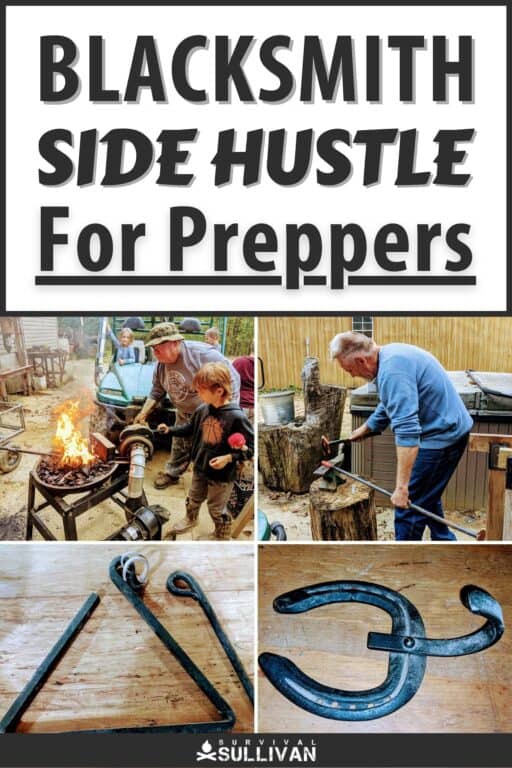

Tara Dodrill is a homesteading and survival journalist and author. She lives on a small ranch with her family in Appalachia. She has been both a host and frequent guest on preparedness radio shows. In addition to the publication of her first book, ‘Power Grid Down: How to Prepare, Survive, and Thrive after the Lights go Out’, Dodrill also travels to offer prepping tips and hands-on training and survival camps and expos.
